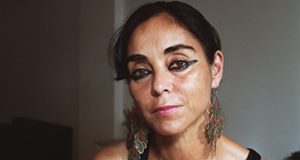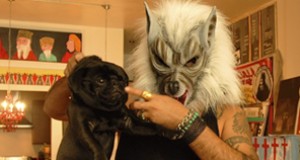

harif-guzman_3

harif-guzman_6
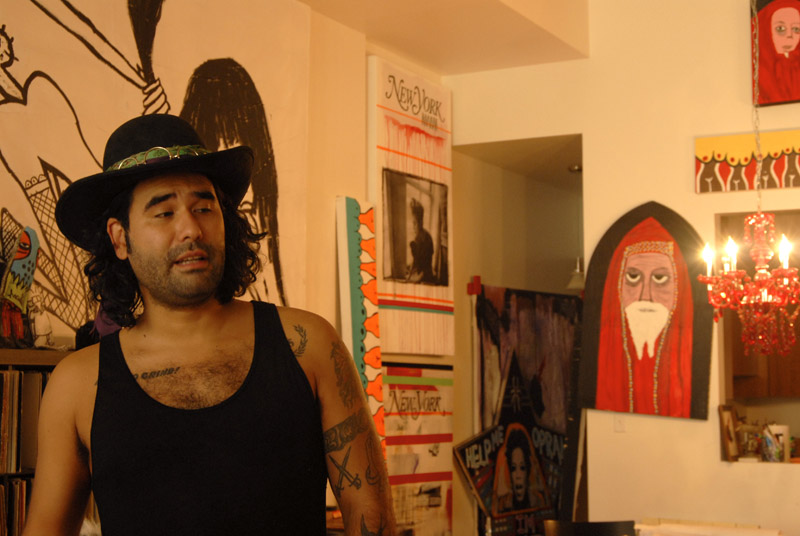
harif-guzman_1
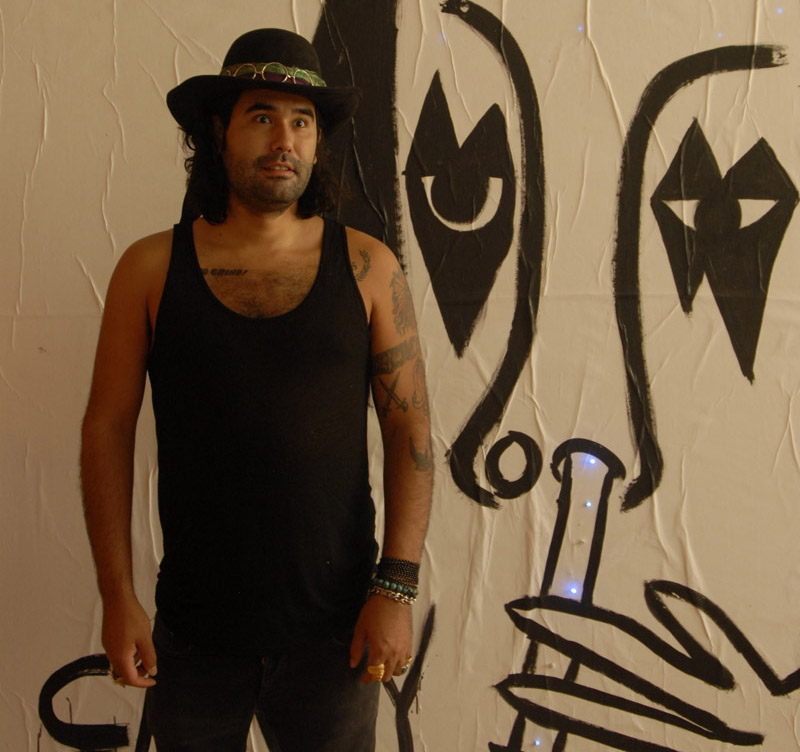
harif-guzman_2
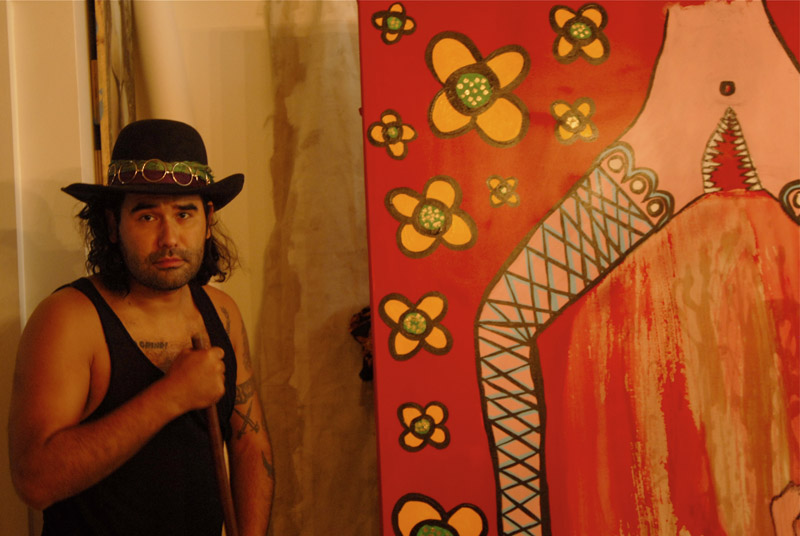
harif-guzman_4

harif-guzman_5
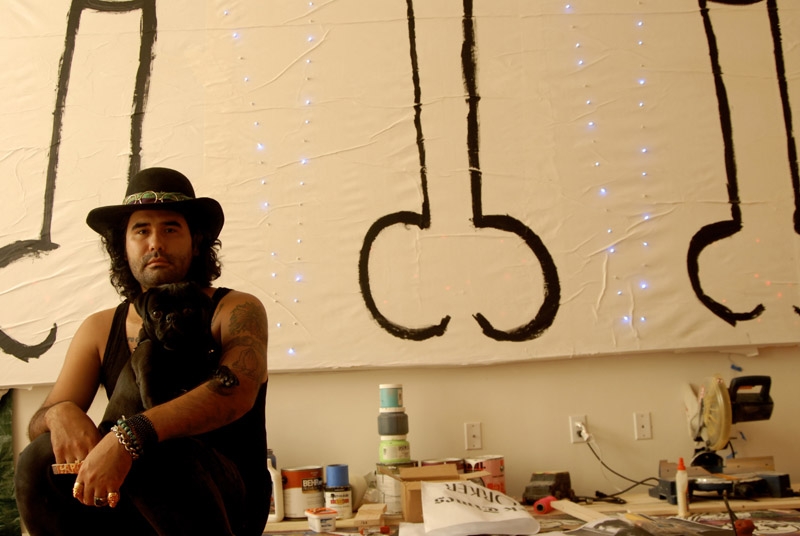
harif-guzman
Fresh from the streets of downtown New York, artist Harif Guzman is the new buzz among fine-art collectors around the world.
Written by Daniel Cassady / Photographed by Carla Phillips
The elevator door opens into his loft on the third floor. “The Leader”, a track from The Clash’s triple album “Sandanista!” blasts from the stereo.
Canvasses lean against the wall in rows, while works in progress, in varying degrees of completion, cover the floor. Brushes, cans of spray paint, bits of paper and enlarged photographs lie strewn about, waiting to be turned into something new by busy artist Harif Guzman.
Guzman and I sit at a large wooden table at the far end of his studio-cum-living space, near the kitchen. On the table there are two or three coffee cups filled with markers.
Little drawings and quotes are scrawled on the table’s unfinished surface. Just to the left of my notebook, in blue-ish ink, I can make out the well known Zendik quote “Stop bitching and start a revolution.” Guzman seems to have taken that saying to heart.
Born in Venezuela, Guzman had called more than a few cities home before settling in downtown Manhattan in early 2000. He talks about a skateboard theft that took place behind an ice cream parlor in Puerto Rico (he was the victim, not the thief), a small room in Miami, DJ gigs, and odd jobs in California. But the way Guzman speaks about his past suggests that he doesn’t dwell on bad memories, especially in light of a future ripe with possibility.
When Guzman first moved to Manhattan, he didn’t have a permanent home. More often than not he would leave his clothes in the basement of his friend Adrian Lopez’s ABC skate shop in Alphabet City, go out all night, and wind up on someone’s sofa. The next day he would shower and return to ABC’s basement to change clothes. He tells me the secrets of successful couch surfing: show respect. Hide your things. Don’t interrupt the day-to-day life of those who let you crash at their houses. Do the all the dishes, not just yours. “It’s always the people that wash all the dishes that become successful, not the guy that just does his own dish. You have to be a man…that’s what I think is cool about New York. You have to man up over here; you have to have balls to live in Manhattan and make things happen.”
Some say the new artistic currency can be counted on the number of talented fingers one has in different creative pies. If this is true, Guzman’s hands are deservedly filthy. In addition to his painting, he explores photography and is producing a record. He didn’t seek the life of a fine artist; It laid itself out in front of him—although he didn’t always
know exactly what he was doing.
Guzman loves a good challenge. “Without a struggle no good would come out of anything.” He believes that if you want to learn something you should jus start doing it. Remember the quote on the table? He wanted to paint, so he started painting. Everything else, he tells me, you learn along the way, with the help of all the different hoops you have to jump through. Guzman points out the parallels between producing art and skateboarding, which he has been doing since he was three. “You have to eat shit, or you
won’t get any better.
If you are too self-conscious then you are not having fun. And if you aren’t having fun, you’re not even skateboarding…it’s the same with art. There is no pass or fail in art. It’s not about that. It isn’t about being the best. It’s about actually doing something. It’s about the act of creating something where before, there was nothing.”
Guzman has spent the majority of this year organizing and preparing. Until recently he has never had a proper web site, which he believes worked against him. That has been remedied. Half the trick of becoming successful, he tells me, is showing up. He hands me two glossy, finely-bound compilations that showcase his recent artwork, a good deal
of which hangs on the walls around us.
The most interesting pieces in the new collection are made from mixed media, incorporating canvas, paint, and colored lights. Some of the lights poke through the canvas, and some are hidden behind it, only visible when lit up. They can be set to varying degrees of brightness, giving these pieces a different air at each setting. An aggressive piece depicting a man and woman having sex doggie-style, with red colored lights illuminating the man’s genitalia, and spilling from the woman’s mouth, suddenly becomes passionate, almost tender, when the lights are dimmed, and pulsing ever so slightly. The lights can also be made motion-sensitive. This works to great effect in a piece colored with blue lights, which features William Shakespeare sniffing a healthy dose of cocaine. The viewer can follow the lights up through the straw and into The Bard of Avon’s brain, where they dance around. The more people stand near the piece, the more the little molecules dance.
Most of Guzman’s pieces are sexual or aggressive in nature, but they are not necessarily meant to be taken too seriously. When asked how he feels about others’ interpretations of his work, Guzman says he believes people bring their own points of view to each piece and end up labeling it accordingly. As for him, he prefers a more Buddhist approach: the simpler the better.
Guzman has two more books in the works. In one, titled “Hot Boys”, Guzman intends to ride his bicycle around downtown Manhattan, approach his friends with a fresh pair of fruit of the loom underwear, and coax them into posing semi-nude for a photo. He figures, they have books like that for boys, why not for girls? “I like making things for girls” he explains. “Girls are the ones I am interested in. The main inspiration for my work is women. They are everything. The most beautiful thing in this world is a woman. You could be broke and have the dopest chick, and feel like a million bucks.”
As we finish up over the final tracks of “Sandinista!” a friend who has been crashing with Guzman comes home. Guzman keeps a room for friends whenever they visit or decide to make the move to the mean streets of downtown Manhattan. Fittingly, it’s his way of spreading the love that was shown to him when he first came to the city.

